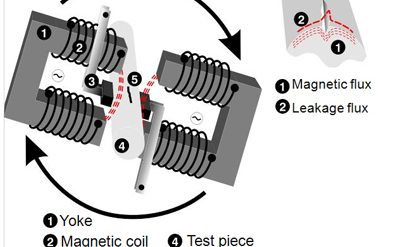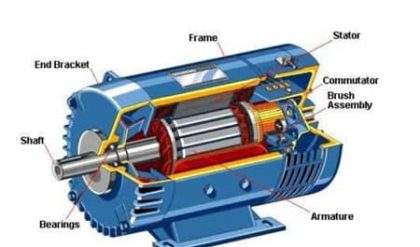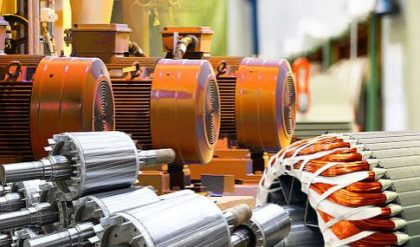Another very common impedance matching application is for 100 volt line transformers for the transmission of music and voice over public address tannoy systems. These types of ceiling based speaker systems use multiple loudspeakers located some distance from the power amplifier. By using line isolating transformers, any number of low-impedance loudspeakers can be connected together in such a way that they properly load the amplifier providing impedance matching between the amplifier (source) and speakers (load) for maximum power transfer.
As power loss of signals through speaker cables is proportional to the square of current (P = I2R) for a given cable resistance, the output voltage of an amplifier used for public address (PA) or tannoy systems uses a standard and constant voltage output level of 100 volts peak, (70.7 volts rms). So for example, a 200 watt amplifier driving an 8-ohm speaker delivers a current of 5 amps, whereas a 200 watt amplifier using a 100 volt line at full power delivers only 2 amps allowing smaller gauge cables to be used. Note however that this 100 volts only exists on the line when the power amplifier driving the line is operating at full rated power otherwise there is reduced power (lower sound volume) and line voltage.
So for a 100V (70.7V rms) line speaker system, the line transformer steps up the audio output signal voltage to 100 volts so that the transmission line current for a given power output is comparatively low, reducing signal losses allowing smaller diameter or gauge cables to be used. Since the impedance of a typical loudspeaker is generally low, an impedance matching step-down transformer (usually called a line to voice-coil transformer) is used for each loudspeaker connected to the 100V line as shown.
100V Transmission Line Transformers

Here the amplifier uses a step-up transformer to provide a constant 100 volts transmission line voltage at reduced current, for a given power output. The loudspeakers are connected together in parallel with each speaker having its own impedance matching step down transformer to reduce the secondary voltage and increase the current, thereby matching the 100V line to the low impedances of the loudspeakers. The advantage of using this type of audio transmission line is that many individual speakers, tannoy’s or other such sound actuators can be connected to a single line even if they have different impedances and power handling capabilities. For example, 4 ohms at 5 watts, or 8 ohms at 20 watts.

Generally transmission line matching transformers have multiple connections called tapping points on the primary winding allowing for suitable power levels (and therefore sound volume) to be selected for each individual loudspeaker. Also, the secondary winding has similar tapping points offering different impedances to match that of the connected loudspeakers.
In this simple example, the 100V line-to-speaker transformer can drive 4, 8, or 16 Ohm speaker loads on its secondary side with amplifier power ratings of 4, 8 and 16 watts on its primary side depending on the tapping points selected. In reality, PA system line transformers can be selected for any combination of series and parallel connected speaker loads with power handling capabilities up to several kilo-watts. But as well as constant voltage impedance matching line transformers, audio transformers can be used to connect low impedance or low signal input devices such as microphones, turntable moving coil pick-ups, line inputs, etc to an amplifier or pre-amplifier. As input audio transformers must operate over a wide range of frequencies, they are usually designed so that the internal capacitance of their windings resonates with its inductance to improve its operating frequency range allowing for a smaller transformer core size.
We have seen in this tutorial about audio transformers, that audio transformers are used to match impedances between different audio devices, for example, between an amplifier and speaker as a line driver, or between a microphone and amplifier for impedance matching. Unlike power transformers which operate at low frequencies such as 50 or 60Hz, audio transformers are designed to operate over the audio frequency range, that is from about 20Hz to 20kHz or much higher for radio-frequency transformers. Due to this wide frequency band, the core of audio transformers are made from special grades of steel, such as silicon steel or from special alloys of iron which have a very low hysteresis loss. One of the main disadvantages of audio transformers is that they can be somewhat bulky and expensive, but by using special core materials allows for a smaller design. This is because as a general rule of thumb, a transformers core size increases as the supply frequency decreases.





